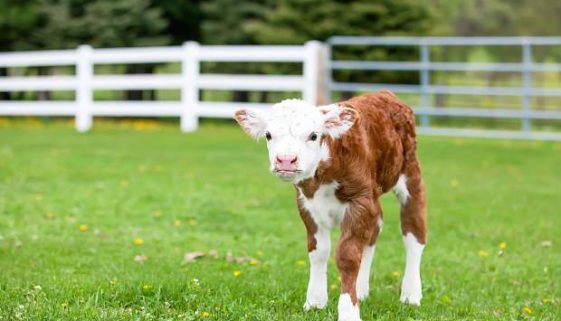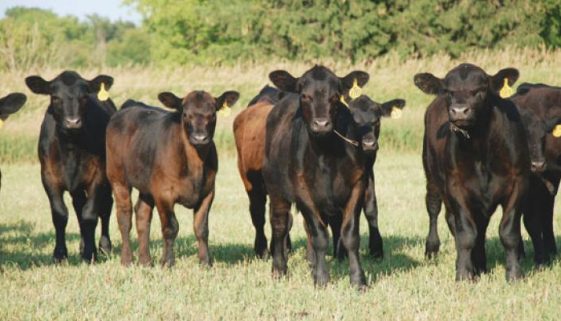
Livestock Diseases


Media Statement: Foot and Mouth Disease Outbreak – MOLEMOLE DISTRICT – 14 November 2019
Media Statement JOINT STATEMENT OF THE DEPARTMENT OF AGRICULTURE, LAND REFORM AND RURAL DEVELOPMENT AND THE LIVESTOCK INDUSTRY 14 November 2019 Progress: Foot and Mouth Disease Outbreak – MOLEMOLE DISTRICT On 1 November 2019, veterinary services were alerted to clinical signs suspected to be Foot and Mouth Disease (FMD) in a herd of cattle on a farm in the Molemole Local Municipality of Capricorn District, Limpopo Province. This farm is located in the previous FMD free zone of South Africa. Samples were collected and FMD was confirmed by the Onderstepoort Veterinary Research Transboundary Animal Disease Programme. FMD is a highly contagious viral disease that affects cattle, pigs (domestic and wild), sheep, goats, and other cloven-hoofed animals. Signs of disease in animals may include depressed animals, sores in the mouth of animals causing reluctance to eat, and lameness. The disease does not affect humans and it is safe to consume products of cloven-hoofed animals, such as meat and milk. Monitoring Following the outbreak, the farm was quarantined. Currently monitoring of production facilities, feedlots and abattoirs is being conducted in Molemole District and adjacent areas. International trade The Molemole-outbreak is adjacent to the Vhembe-outbreak of January 2019 and thus close monitoring and vigilance in the Limpopo Province enabled rapid detection of the incident. All control measures for the Limpopo Province are still in place. A number of agreements were reached with trade partners to trade in safe commodities following the January outbreak; the department has sought assurances that these agreements still hold. […]

Management of Highly Stressed, Newly Received Feedlot Cattle
Abstract Morbidity and mortality from bovine respiratory disease (BRD) and associated losses in performance and carcass merit continue to plague the beef cattle industry. Several viral/bacterial agents are responsible for BRD, and interactions occur among the agents. Viral agents often predispose animals to bacterial infections, and Mannheimia haemolytica is the most frequently isolated organism in cattle with BRD. Laboratory tests are available to characterize organisms causing BRD using easily obtained nasal swab samples. Testing for persistent infection with bovine viral diarrhea virus can be done by a 2-stage technique using PCR and immuno histo-chemistry. Preconditioning programs that include pre-weaning viral vaccination programs along with castration could have a significant influence on decreasing BRD in the cattle feeding industry. Meta-phylactic antibiotic programs continue to be effective; however, antibiotic resistance is a public concern, and additional management options (e.g., direct-fed microbials or other compounds with antimicrobial properties) deserve attention. Diets with an increased energy concentration achieved by decreasing the dietary roughage concentration may slightly increase the rate of BRD morbidity; however, these diets also increase ADG, DMI, and G:F compared with lower-energy, greater-roughage diets. The extent to which performance and BRD morbidity are affected by dietary protein concentration needs further study, but low and high protein concentrations should probably be avoided. Several trace minerals (e.g., Cu, Se, and Zn) affect immune function, but the effects of supplementation on performance and immune function in model challenge systems and in field studies are equivocal. Adding vitamin E to receiving diets at pharmacological […]

Commingling Calves and Respiratory Disease
We would like to invite farmers to keep a farmers’ day in their area regarding the study done in this particular article. This has been a very informative study and we think every cattle farmer can benefit from this. Please contact the Octavoscene Head Office if you are planning to hold such a day in your area. Dr Shaun Morris (BVSc (Hons) MSc Agric), Director of Octavoscene (Pty) Ltd, a specialist feedlot expert and veterinarian, would like to assist you with the training and we will help to make this event a very successful day. This is a relatively long article and the study is about the following topic: Effects of commingling beef calves from different sources and weaning protocols during a forty-two-day receiving period on performance and bovine respiratory disease D. L. Step*,3, C. R. Krehbiel†, H. A. DePra†, J. J. Cranston†; R. W. Fulton**, J. G. Kirkpatrick*, 5D. R. Gill†,M. E. Payton‡, M. A. Montelongo**, andA. W. Confer** 67*Departments of Veterinary Clinical Sciences and **Veterinary Pathobiology, Center for 8Veterinary Health Sciences;†Department of Animal Science, Division of Agricultural Sciences 9and Natural Resources;and ‡Department of Statistics, College of Arts and Sciences, Oklahoma 10State University, Stillwater, OK 74078. Approved for publication by the Director of the Oklahoma Agricultural Experiment Station. This research was supported under project H-2438 and a grant from the Noble Foundation. The authors acknowledge R. Ball, B. Starr, and students from the Willard Sparks Beef Research Center for providing processing, animal care, and record keeping expertise, and Cattleco, […]
Outbreak of Anthrax | 30 May 2019
Red Meat Producers Organisation | By Maryna Brits All farmers are requested to urgently vaccinate their animals against anthrax. This includes cattle, sheep and goats. Anthrax also occurs within game and under no circumstances must venison of infected game, be consumed. Farmers must also be very cautious when buying in new animals and ensure that the animals are disease-free. The movement of animals (live stock and game) must as far as possible be avoided and if any mortalities occur, the carcass must be handled with the utmost care and it must under no circumstances be cut open. This follows after an outbreak of anthrax has been confirmed near Maseru in Lesotho. In this case, humans also got infected with the disease after the carcasses have been cut open and eaten. A ten kilometer radius has been quarantined. Farmers from Ha-Tseka were warned not to take their products to a Maseru trade fair. Even animal movement between the Free State and Lesotho will be restricted and no trade will be allowed. The areas affected includes Ladybrand in the Maseru-zone, Zastron, Wepener, Maputsoe, Botha Bothet and Thabo Mofutsanyane. Anthrax is a highly contagious and infectious soil-borne disease caused by Bacillus anthracis, a relatively large spore-forming bacteria that can infect mammals. Animals are infected with anthrax when they eat contagious plant materials, water or even the bones of dead animals. Animals who contract the disease show the following symptoms :-they don’t eat; there is a decline in milk production; milk may be bloody; […]

